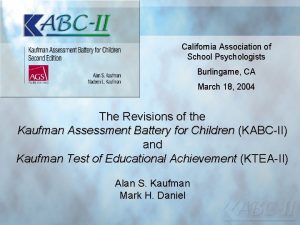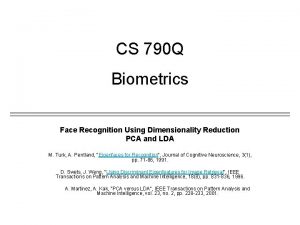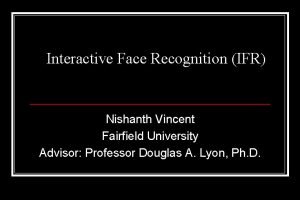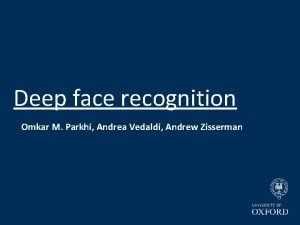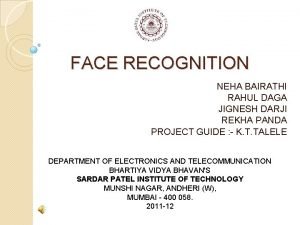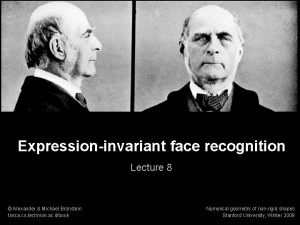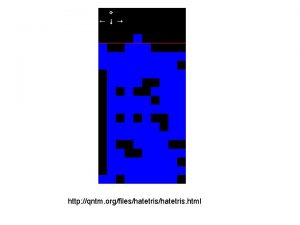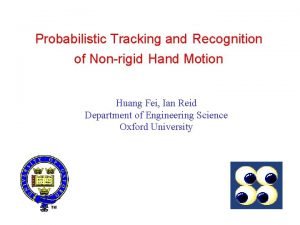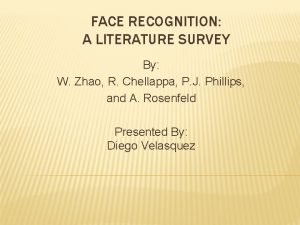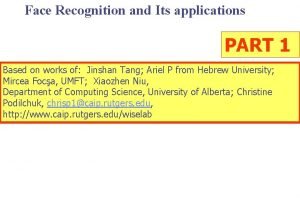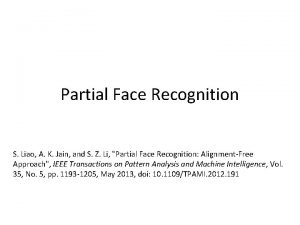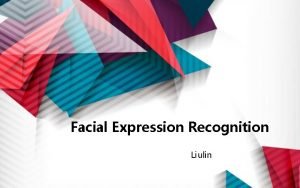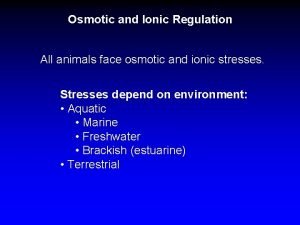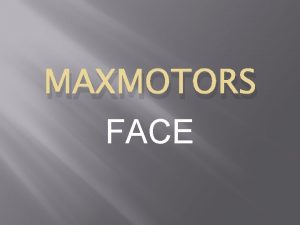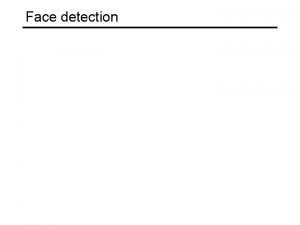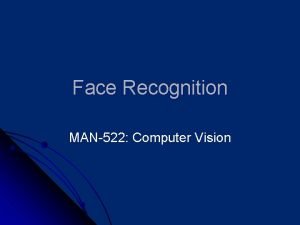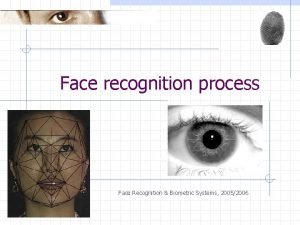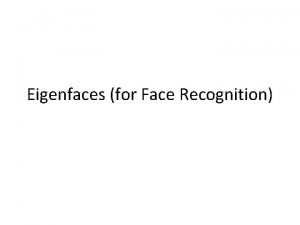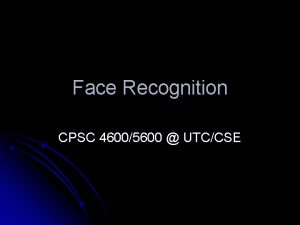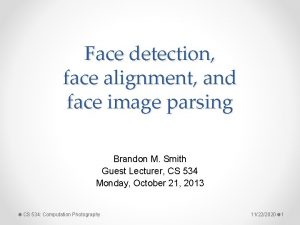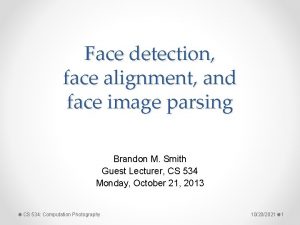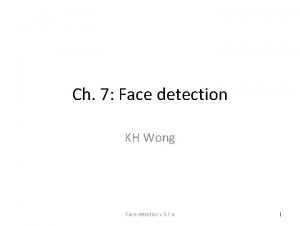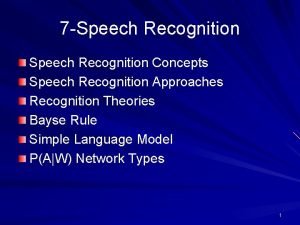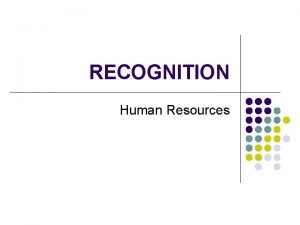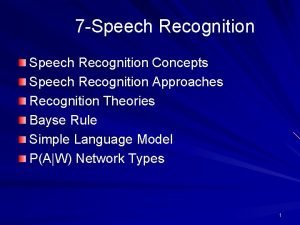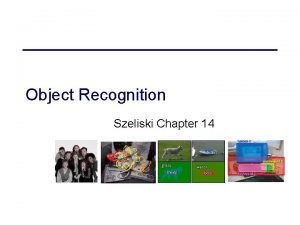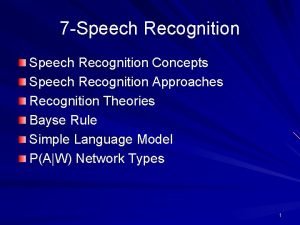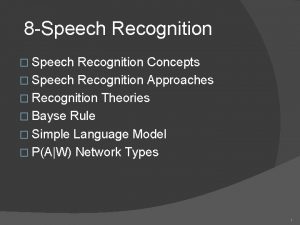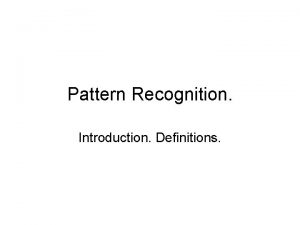Face Detection Is it only for Face Recognition



















- Slides: 19

Face Detection: Is it only for Face Recognition? z. A few years earlier y. Face Detection <=> Face Recognition z. Present Applications of Face Detection y. Face Recognition y. Content based Video Indexing and Retrieval y. Video Scene Classification / Annotation y. News Summarization ICIP 2000, Vancouver, Canada IVML, ECE, NTUA

Face Detection as a part of Face Recognition Schemes z High Accuracy is required y. Remarkable results are obtained only if we pose rigorous constraints y. Algorithms are concentated in gray-scale images y. Template matching or low level feature detection z Time consuming procedures ICIP 2000, Vancouver, Canada IVML, ECE, NTUA

Face Detection and Multimedia Applications z In many cases its enough to detect the presence of a face in a picture / video sequence yi. e. detect the anchorperson z Fast Implementations (Real Time performance is desirable) yexample: news summarization z Color should be exploited y. Convenience with dedicated content based indexing /retrieval algorithms ICIP 2000, Vancouver, Canada IVML, ECE, NTUA

The Proposed Scheme z Combine color segmentation and skin color characteristics z Use M-RSST as a general purpose segmentation algorithm. z Associate each segment with a skin color probability obtained by an adaptive 2 -D Gaussian density function used for modeling skin-tone color distribution; z Exploit shape characteristics to discriminate face from skin segments => face probability z Query-by-example framework proposed for interactive human face retrieval ICIP 2000, Vancouver, Canada IVML, ECE, NTUA

Color Segmentation: M-RSST z Multiresolution decomposition and construction of a truncated image pyramid z All 4 -connected region pairs assigned a link weight equal to the distance measure z Recursive merging of adjacent regions and boundary block splitting in each resolution level z Fast algorithm, employed directly on MPEG streams with minimal decoding ICIP 2000, Vancouver, Canada IVML, ECE, NTUA

M-RSST Flowchart ICIP 2000, Vancouver, Canada IVML, ECE, NTUA

Segmentation and probability assignment ICIP 2000, Vancouver, Canada IVML, ECE, NTUA

Shape Processing z Global shape features of segment contours y. Shape compactness: y. Shape elongation: z Both normalized in [0, 1] and invariant to translation, scaling and rotation z Combination with skin-color probability using non-linear functions – construction of an overall face probability map z Segments with extremely irregular shape discarded ICIP 2000, Vancouver, Canada IVML, ECE, NTUA

Skin-Color Region Extraction z Re-estimation of the mean vector based on current image / frame: μ : the estimated from the current image / frame mean vector m: a memory tuning constant z Skin-color region merging based on estimated skin-color probability: z Adjacent face segments merged – remaining partition map not affected ICIP 2000, Vancouver, Canada IVML, ECE, NTUA

The proposed skin color model z Skin color characteristics are modeled via a 2 DGaussian distribution x: input pattern (mean chrominance components of an image block) μ 0: mean vector C: covariance matrix ICIP 2000, Vancouver, Canada IVML, ECE, NTUA

Skin Color Modeling Issues z. Skin color subspace covers a small area of the Cr-Cb plane but: yit cannot be modeled in such a general way to be efficient for all images that include faces y‘relaxing’ the model => increased number of False Alarms ya ‘rigorous’ model => increased number of Dismissals z False Alarm: Detection of a face in a wrong position or in frames / pictures where no faces are contained z Dismissal: A failure to detect an existing face ICIP 2000, Vancouver, Canada IVML, ECE, NTUA

The YCr. Cb color space and the human skin z Skin color can be modeled via the chrominance components of the YCr. Cb color model y. Skin color covers a small part of the Cr-Cb plane y. The influence of Y channel is small z However, post processing steps are required: y. Other objects have skin like color y. Y channel influence not totally negligible y. Compact objects desirable => Filtering ICIP 2000, Vancouver, Canada IVML, ECE, NTUA

Face detection in a variety of situations (a) (b) (c) (a) Original images, (b) skin-color probability map, (c) final face probability map (including shape features). ICIP 2000, Vancouver, Canada IVML, ECE, NTUA

Further verification required? Isolated skin segment Edges Fitted Ellipses z. Calculate the edges within the probable face segment z. Check whether an ellipses can be fitted to the edges ICIP 2000, Vancouver, Canada IVML, ECE, NTUA

Experimental Results z Anchorpersons scenes: recorded from TV news; Various scenes: recorded from TV programs; Webcameras: Shots captured using Webcameras; Photos: Regular colored photos ICIP 2000, Vancouver, Canada IVML, ECE, NTUA

A Retrieval Scenario z Images in database segmented and color chrominance components, size and shape information stored z Query-by-example : User presents a facial image; system performs face detection and ranks existing images according to several criteria z Retrieval based on color similarity, facial scale or number of face segments possible z Retrieved images returned to user; further manual selection used to adapt skin-color probabilistic model ICIP 2000, Vancouver, Canada IVML, ECE, NTUA

Skin Color based Retrieval Image Presented to the system Selected by the user segment mem: 0. 3 0. 9992 ICIP 2000, Vancouver, Canada 0. 9872 0. 9735 IVML, ECE, NTUA 0. 9591

Retrieval based on Facial Scale Image Presented to the system Segmented Face mem: 0. 8 Facial area: 0. 0867 0. 0873 ICIP 2000, Vancouver, Canada 0. 0883 0. 0969 IVML, ECE, NTUA 0. 0985

Efficient Face detection for Multimedia Applications N. Tsapatsoulis, Y. Avrithis and S. Kollias Image, Video and Multimedia Lab. Dept. of Electrical and Computer Engineering National Technical University of Athens e-mail: {ntsap, iavr}@image. ntua. gr
 California association of school psychologists
California association of school psychologists Face recognition
Face recognition Face recognition
Face recognition Deep face recognition parkhi
Deep face recognition parkhi Face recognition
Face recognition Face recognition literature review
Face recognition literature review Face recognition
Face recognition Face recognition
Face recognition Paul hrycewicz
Paul hrycewicz Face recognition
Face recognition Face recognition a literature survey
Face recognition a literature survey Face recognition
Face recognition Clova face recognition
Clova face recognition Face recognition demo
Face recognition demo Old woman young woman illusion
Old woman young woman illusion Face recognition
Face recognition Face detection ppt
Face detection ppt Computer vision vs image processing
Computer vision vs image processing Ruby face detection
Ruby face detection Ionic face detection
Ionic face detection
